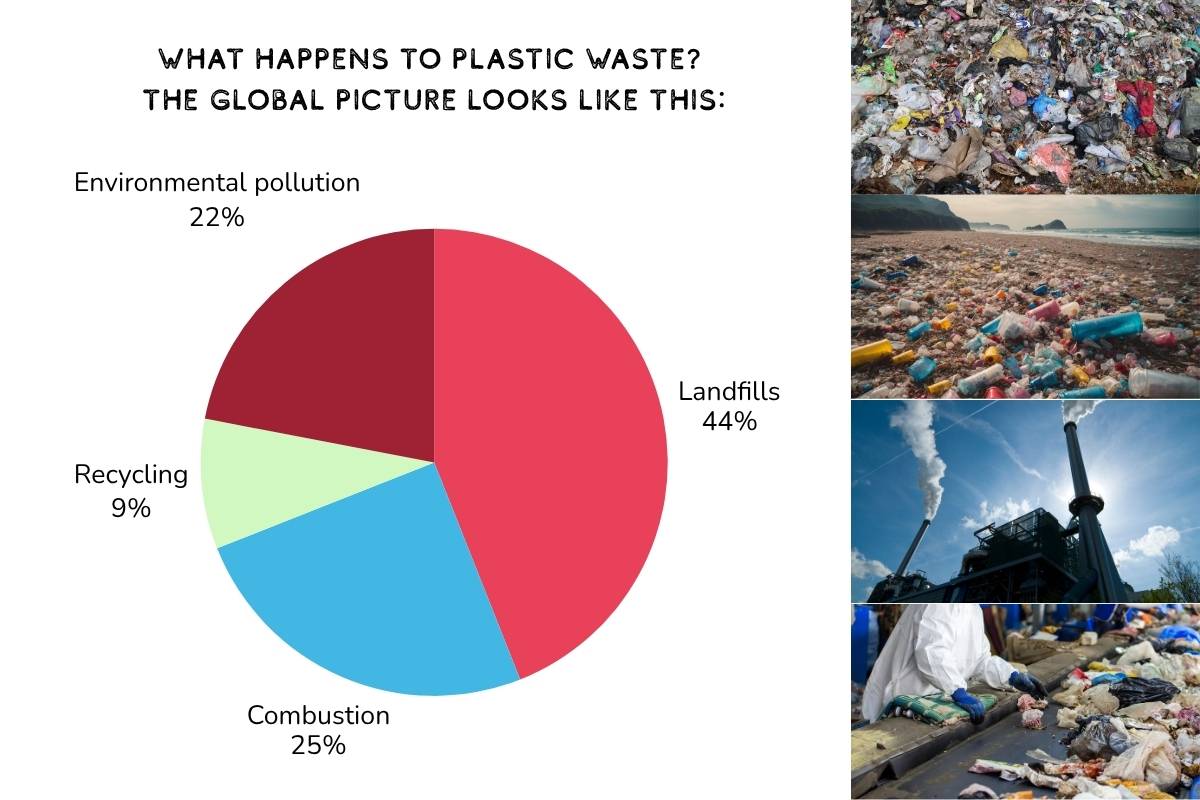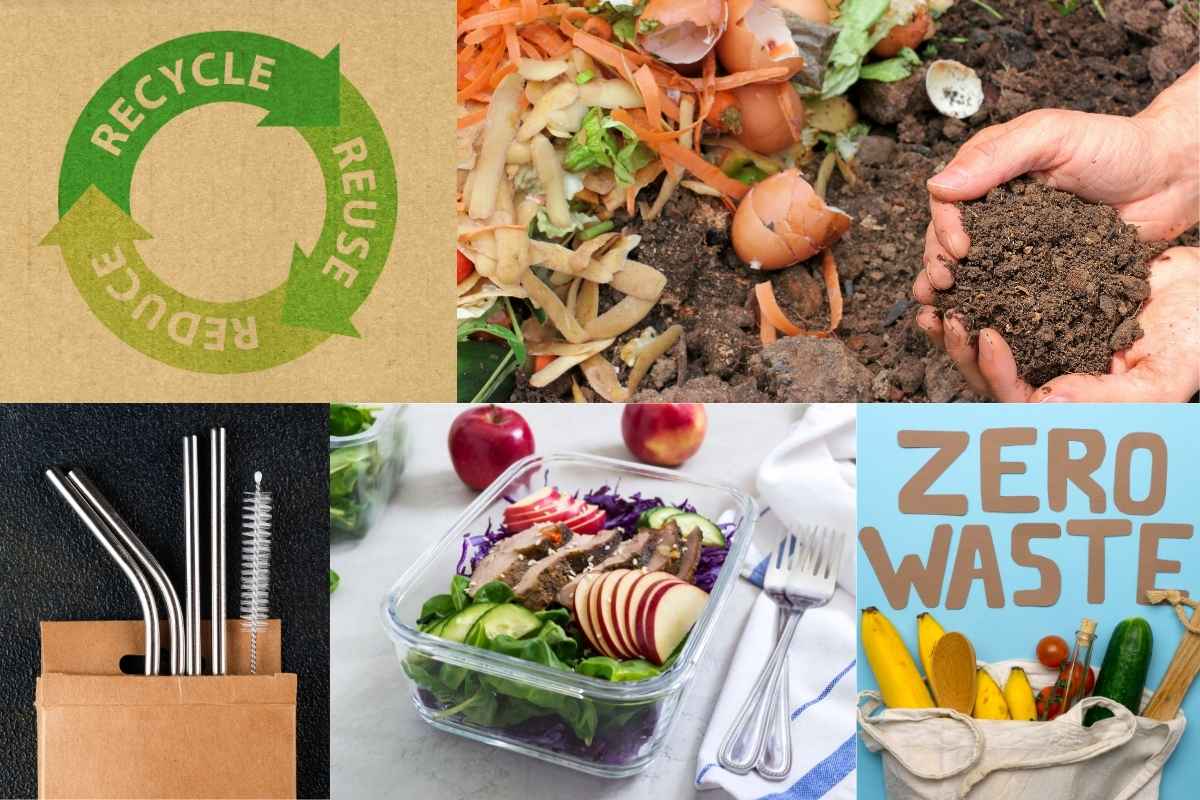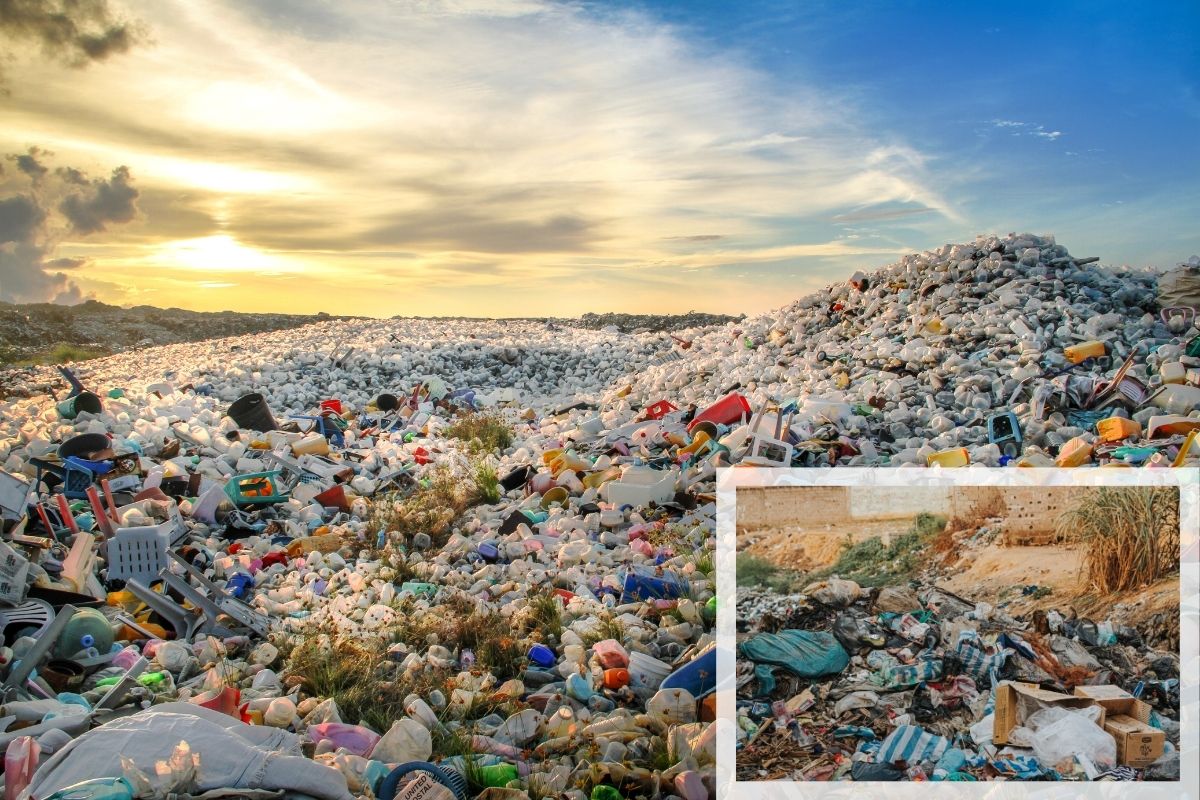A look behind the scenes
Perhaps you’re wondering what the real situation is with our plastic waste in Europe. Let’s take a look behind the scenes together—including at countries like Spain, France, Portugal, and other European nations, which, alongside Germany, Austria, and many more, shape the waste problem.
The Real Recycling Rate: An Illusion
Only 9% of all plastic produced worldwide is actually recycled. In Europe, the rates vary: while Austria currently recycles around 25% of its plastic packaging, Spain is at about 29%—but even that is far from the EU targets, which require a rate of 50% by 2025 and 55% by 2030. The majority of plastic waste still ends up in landfills, incinerators, or is exported abroad.
What happens to plastic that isn’t recycled?
Landfills: The Invisible Danger
About half of the world’s plastic waste ends up in landfills—even in Spain, around 60% of plastic waste is still landfilled, despite progress in recycling. There, the plastic breaks down over centuries into microplastics, polluting soil and groundwater.
Incineration: Energy Recovery – But at What Cost?
19–25% of global plastic waste is incinerated. In Japan, it’s even 70%, but in Europe too, incineration is a key part of waste management. Spain, Germany, and other countries use waste incineration plants to generate energy—often only after long transport routes. Spain’s new Waste and Soil Protection Act taxes landfilling and incineration to incentivize recycling and a circular economy.
Pollution: The Local Catastrophe
22% of global plastic waste is “mismanaged”—illegally dumped, openly burned, or directly thrown into the environment. This also happens in Europe: recently, 41,000 tons of plastic waste from Spain, France, and Portugal were partly illegally stored and partly exported to countries like India, Turkey, Malaysia, Brazil, Morocco, Thailand, and the UK. Five people were arrested and 15 more are under investigation.
Export: Shifting the Problem Instead of Solving It
Germany exports over 10% of its plastic waste.
In 2024, Germany shipped about 732,000 tons of plastic waste abroad—over 10% of its total plastic waste. Main destinations include Malaysia, Indonesia, Vietnam, and Turkey. Poland and other Eastern European countries are also taking in more German waste.

The Global Scale of Waste Shifting
The top 10 exporting countries ship over 4.4 million tons of plastic waste per year. Spain, France, and Portugal are also involved – as shown by the recent scandal involving an international waste export ring. Difficult-to-recycle and environmentally hazardous waste was transported, traded, and stored across borders without permits – some in unauthorized landfills in Spain, some abroad.
What happens to exported waste?
In destination countries, most imported plastic waste is not recycled:
– Open burning without filters: 57% of the 52 million tons of mismanaged waste is openly burned.
– Uncontrolled disposal: 43% remains as uncontrolled litter in the environment.
– Lack of infrastructure: Recycling facilities are often inadequate, so only a fraction is actually recycled.
The Losers: Developing Countries and the Environment
The biggest emitters of plastic into the environment are countries with insufficient waste infrastructure, like India, Nigeria, and Indonesia. Germany may export its problems, but still emits 7,725 tons per year directly into the environment.
What We Lose – and What We Could Gain
Just transporting these enormous amounts of waste worldwide causes millions of tons of CO₂ emissions.
Imagine if we recovered energy from waste where it is generated: we could save all these transport emissions, generate energy locally, and relieve the environment.
The Solution: Decentralized Energy from Sustainable Plastic Waste Processing
We urgently need decentralized solutions:
Plastic waste should be sustainably converted to energy where it is produced.
This protects the environment, saves CO₂, and creates local value.
Spain is leading the way: its new Waste and Soil Protection Act bans single-use plastics, promotes waste separation, and taxes landfilling and incineration to boost recycling. The EU aims to make all packaging recyclable by 2030 and is pushing for reusable systems.
Join in – let’s end this madness – be part of the change!
Even if the EU meets its target of a 55% recycling rate by 2030, how many tons of waste would still go unrecycled each year?
With an estimated annual plastic waste production of 25 million tons in the EU and a 55% recycling rate, about 11.25 million tons of waste would still remain unrecycled every year.

How realistic is it that we’ll actually reach this rate?
Although the EU has set ambitious targets, it’s questionable whether a 55% recycling rate will be achieved across the board by 2030, due to infrastructure, consumer behavior, and global trade flows.
What happens to the rest?
The remaining waste will continue to be landfilled, incinerated, or exported – causing environmental and health problems. Yet there are already sensible and quickly implementable solutions for decentralized processing.
Through the “Guardians of the Earth” project, we are working to inform policymakers and associations about the urgent need to change the system.
We need your support to put pressure on and achieve real change.
Join in let’s end this madness – be part of the change!
Author: Francesco del Orbe


